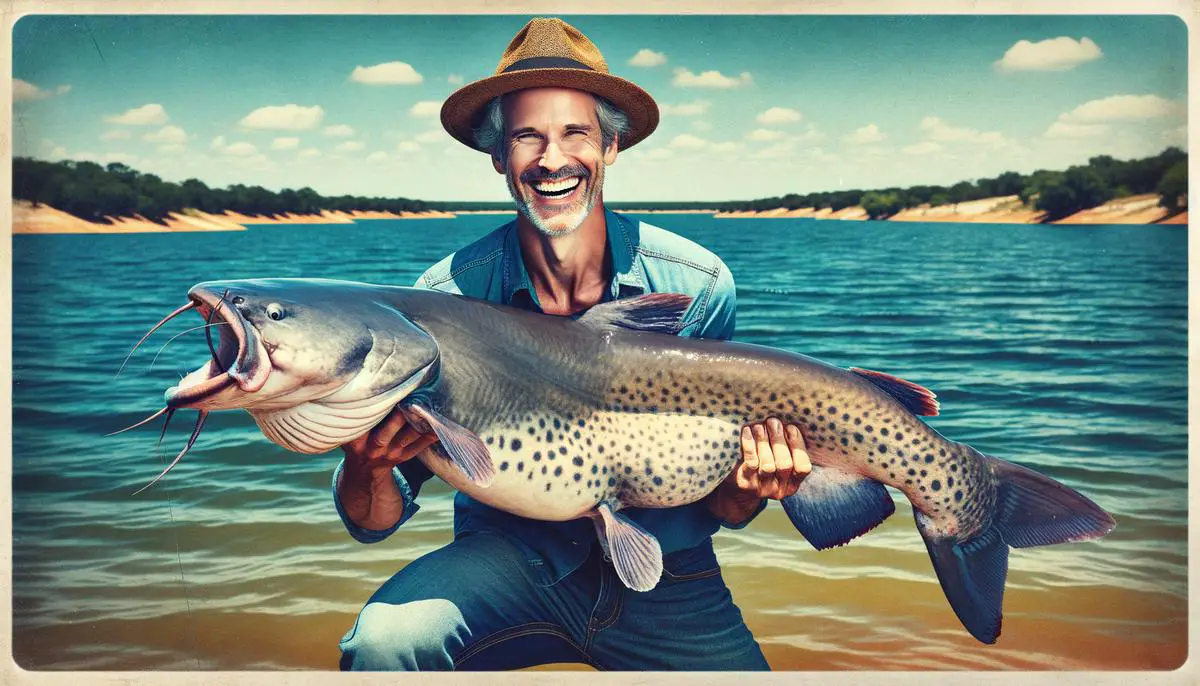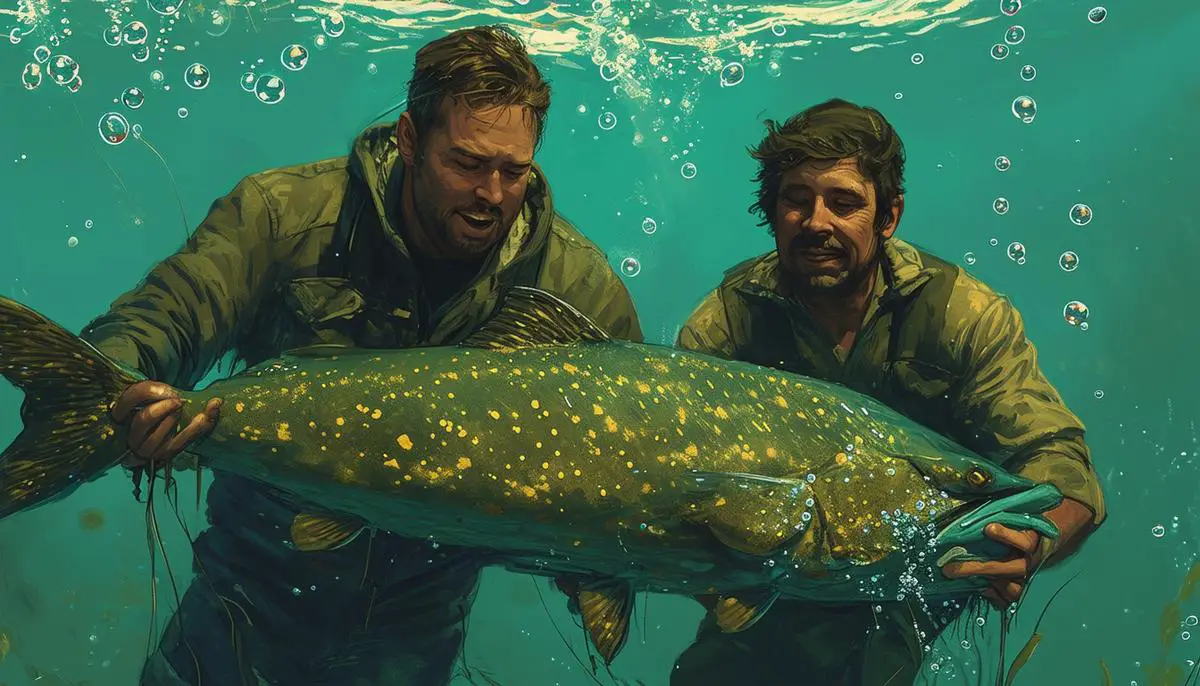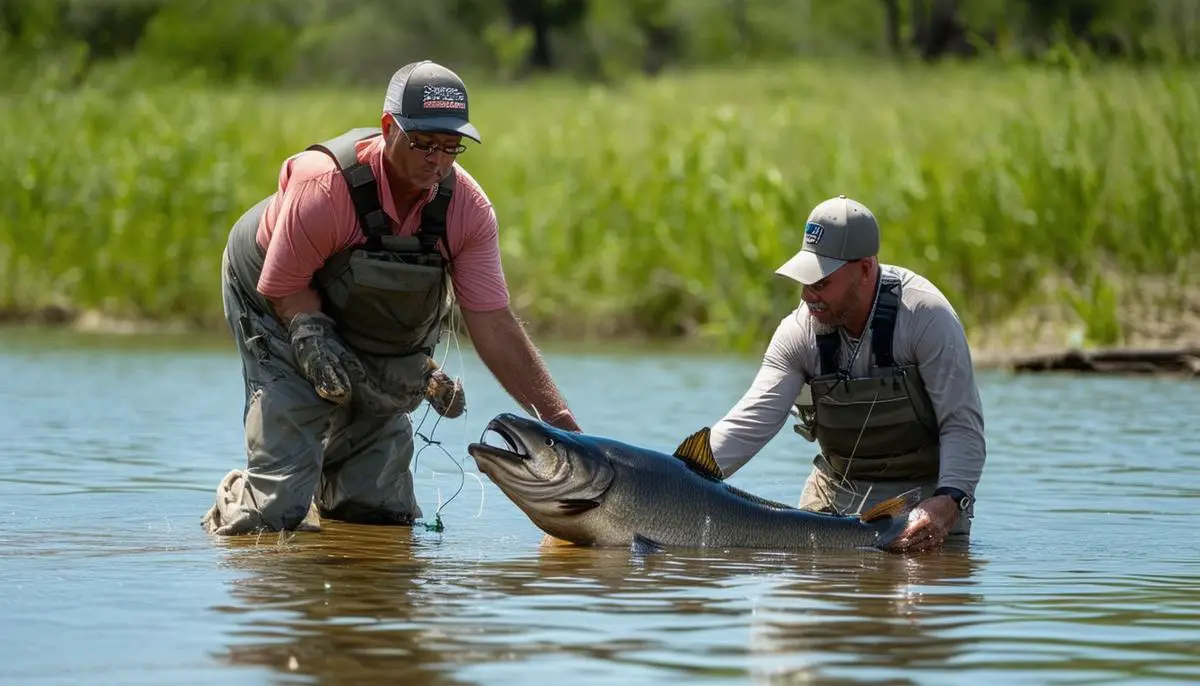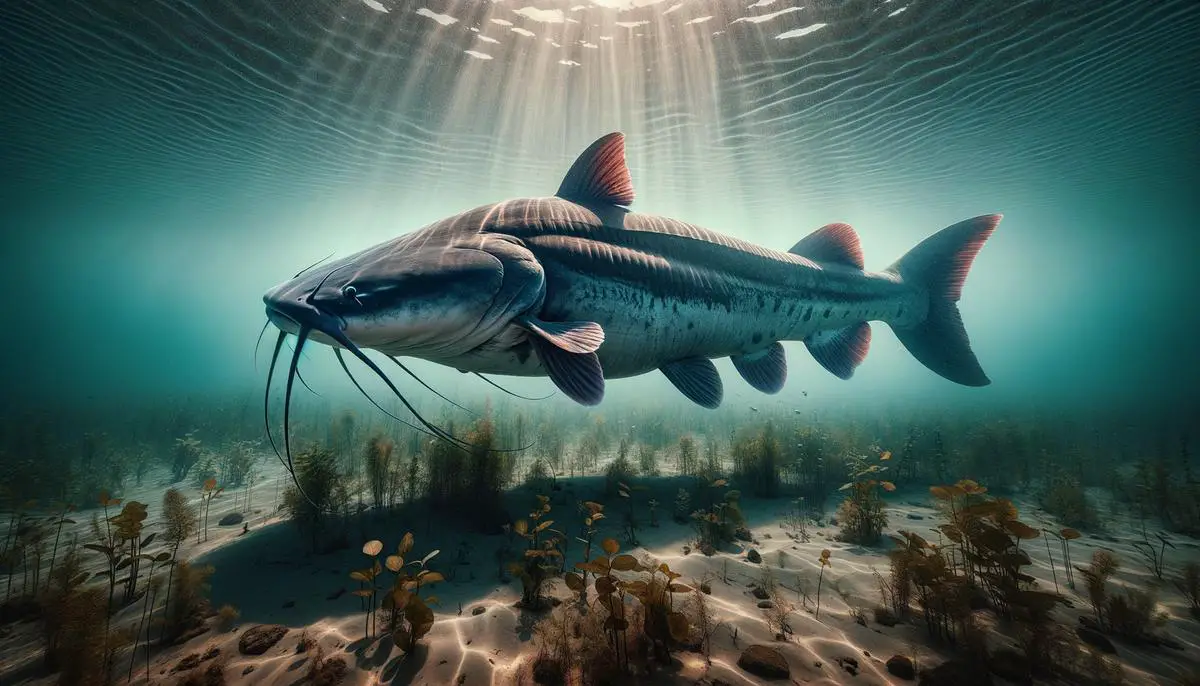Ricardo Garza, an enthusiastic angler and seasoned fishing guide, made headlines with a spectacular catch on Falcon Lake, Texas. On January 15, Garza landed a gargantuan blue catfish, tipping the scales at an impressive 62 pounds and measuring 45.5 inches in length.
Texas Parks and Wildlife Department (TPWD) acknowledged this monumental catch. Garza received a water body record award and earned a release record award, demonstrating his commitment to conservation through the practice of catch and release. TPWD also bestowed upon him the Outstanding Angler Award, an acknowledgment reserved for unique achievements in angling.
Blue catfish, the behemoths of Texas freshwater fish, predominantly inhabit the expansive river systems across the state. Known for lurking in the deep channels, tributaries, and reservoirs, these fish are a challenge for anglers and a keystone species in their ecosystems. According to TPWD, trotliners have previously reeled in blue catfish exceeding 115 pounds, with the Texas rod-and-reel record standing at 121.5 pounds.1
Falcon Lake, situated 40 miles southeast of Laredo in Zapata County along the Rio Grande, provided the perfect backdrop for Garza's record-setting expedition. The lake's murky depths and abundant food sources allow blue catfish to reach impressive sizes.
This remarkable tale highlights a single fish's impressive dimensions and underscores the rich biodiversity of Texas' waterways. As Garza remarked following his catch, recognizing these moments connects individuals with the natural world, reinforcing the importance of ongoing conservation efforts.

On June 23, Justin White and Drew Moore achieved a fishermen's milestone with an unconventional catch at Lake Tawakoni. Using a method called noodling, where fish are caught by hand, they captured a 98.7-pound flathead catfish from about 14 feet under the water's surface.
The duo descended to a known catfish haven under a bridge, spotting their target in an underwater cavern. The flathead catfish, known for its ferocious defense of its spawning area, engaged immediately. Moore described the struggle as finding oneself locked in a closet with an unseen MMA fighter, relying purely on touch and instinct to wrest control.
Despite mud and limited visibility, guided back to the surface by their air-tank hoses, they successfully overcame the challenge. The fish measured an impressive 56 inches in length with a hefty 44-inch girth.
After securing the catfish, White and Moore made several pauses on their way back to shore to engage the fish in controlled swims, emphasizing their respect for its well-being and conservation principles. Once ashore, the true scale of their achievement was recognized on certified scales and will possibly stand as one of the largest catfish ever noodled to be officially recorded.2
Their experience underlines the extreme nature of noodling and serves as a reminder of the raw beauty and unscripted moments that nature can offer when approached with reverence and courage.

The awe-inspiring catches by Ricardo Garza and the duo of Justin White and Drew Moore may influence future fishing practices and ecological regulations in Texas. As record-breaking catches become more common, Texas Parks & Wildlife Department (TPWD) could consider adjustments to fishing limits and conservation laws to prevent overfishing and ensure sustainable fish populations.
Jake Norman, a TPWD fisheries biologist, expressed admiration for these angling achievements, yet cautioned about the broader implications for local ecosystems. He mentioned that while these catches are spectacular, they should also prompt a review of fishing practices and habitats to ensure that big fish continue to thrive, contributing to biodiversity and a healthy aquatic environment.
Garza, after releasing his record blue catfish, spoke of a renewed commitment to promoting catch-and-release practices among his guide service clients. He believes that sustainable angling can be both exhilarating and environmentally sound.
Similarly, White and Moore are now more conscious of their interactions with wildlife and determined to advocate for responsible noodling practices. Their efforts to maintain live releases and publicize the exhilaration of noodling are raising awareness about both the sport and ecological stewardship.
In response to these angling feats, TPWD might explore enhancing educational programs highlighting techniques for minimizing environmental impact while engaging in recreational fishing. The department could foster community engagement initiatives that allow anglers to participate in habitat preservation activities.
Balancing enthusiasm for angling with ecological welfare could reshape Texas' fishing landscape. Making remarkable catches while preserving the integrity of Texas' diverse aquatic environments may soon define the new era of fishing in the region, aligning thrilling sportsmanship with vigorous conservation efforts.

- Texas Parks and Wildlife Department. Blue Catfish (Ictalurus furcatus). Texas Parks and Wildlife Department Website.
- International Game Fish Association. World Record Game Fishes. International Game Fish Association; 2021.



Welcome to our blog!